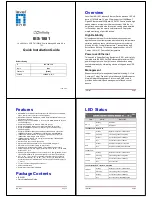
Table 168: Private VLAN Interface Fields
Field
Description
Interface
The interface associated with the rest of the data in the row. When editing
interface settings, this field identifies the interface being configured.
Mode
The private VLAN mode of the interface, which is one of the following:
•
General – The interface is in general mode and is not a member of a
private VLAN.
•
Promiscuous – The interface belongs to a primary VLAN and can
communicate with all interfaces in the private VLAN, including other
promiscuous ports, community ports, and isolated ports.
•
Host – The interface belongs to a secondary VLAN and, depending upon
the type of secondary VLAN, can either communicate with other ports in
the same community (if the secondary VLAN is a community VLAN) and
with the promiscuous ports or is able to communicate only with the
promiscuous ports (if the secondary VLAN is an isolated VLAN).
Host Primary VLAN
The primary private VLAN the port is a member of when it is configured to
operate in Host mode.
Host Secondary VLAN
The secondary private VLAN the port is a member of when it is configured to
operate in Host mode. The secondary private VLAN is either an isolated or
community VLAN.
Promiscuous Primary VLAN
The primary private VLAN in which the port is a member when it is configured
to operate in Promiscuous mode.
Promiscuous Secondary VLAN The secondary private VLAN the port is a member of when it is configured to
operate in Promiscuous mode. The secondary private VLAN is either an
isolated or community VLAN.
Operational Private VLAN
The primary and secondary operational private VLANs for the interface. The
VLANs that are operational depend on the configured mode for the interface
and the private VLAN type.
Click
Refresh
to display the latest information from the router.
Voice VLAN Configuration
The voice VLAN feature enables switch ports to carry voice traffic with defined settings so that voice
and data traffic are separated when coming onto the port. A voice VLAN ensures that the sound quality
of an IP phone is safeguarded from deterioration when data traffic on the port is high.
The inherent isolation provided by VLANs ensures that inter-VLAN traffic is under management control
and that network-attached clients cannot initiate a direct attack on voice components. A
protocol based on the IEEE 802.1P
protocol uses classification and
scheduling to send network traffic from the switch in a predictable manner. The system uses the source
MAC of the traffic traveling through the port to identify the IP phone data flow.
Voice VLAN is enabled per-port basis. A port can participate only in one voice VLAN at a time. The
Voice VLAN feature is disabled by default.
To display the Voice VLAN Configuration page, click
Switching
>
Voice VLAN
>
Configuration
.
Configuring Switching Information
ExtremeSwitching 200 Series: Administration Guide
177
















































